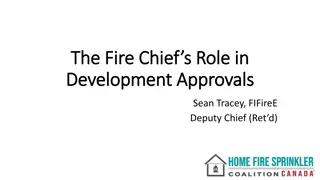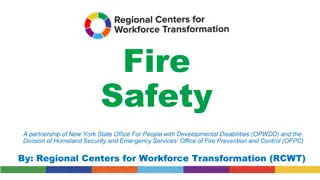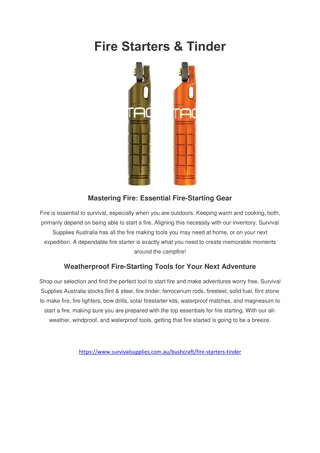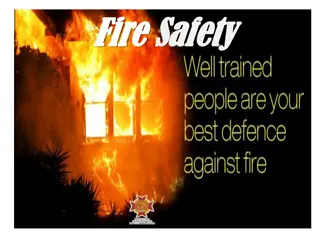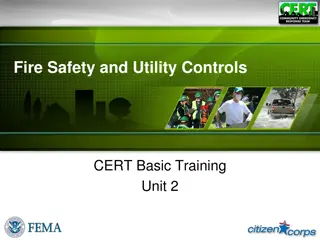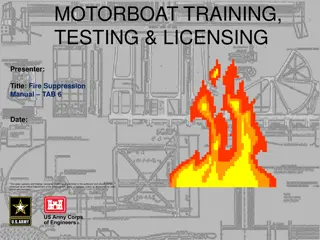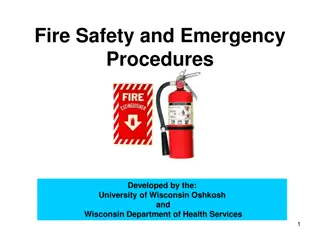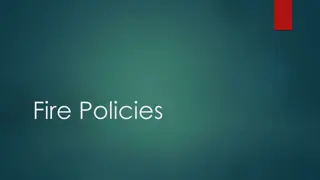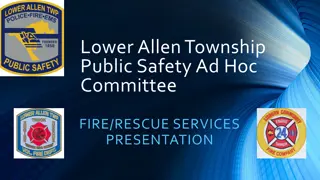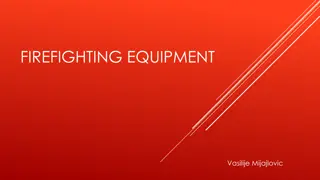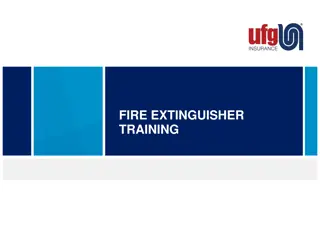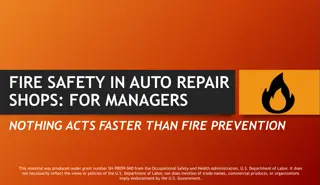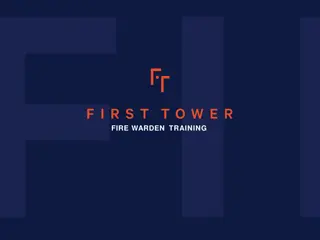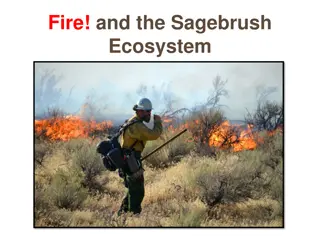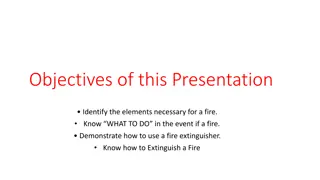Ensuring Effective Fire Training Programs Development
Addressing critical issues in fire training programs, this guide offers insights on starting a program effectively, forming the right team, and developing organizational and training plans. Emphasizing the importance of meeting regulatory requirements and assessing department needs, the content stresses the continual evaluation and improvement of firefighters' skills to enhance operational readiness and safety.
Download Presentation

Please find below an Image/Link to download the presentation.
The content on the website is provided AS IS for your information and personal use only. It may not be sold, licensed, or shared on other websites without obtaining consent from the author. Download presentation by click this link. If you encounter any issues during the download, it is possible that the publisher has removed the file from their server.
E N D
Presentation Transcript
Building the Foundation of a Fire Training Program
Objectives Discuss some issues with training programs Offer points for consideration when building a training program
ISSUES WITH TRAINING PROGRAMS Fail to provide firefighters with the skills and knowledge to handle the department s operational functions. Do not meet the required hours to maintain qualifications or retain skills. Many lack a qualified training officer. Department policies are insufficient to guide the development of training programs. Training programs do not follow a written lesson plan. Training programs do not require basic skills repetition to ensure competence. Advanced skills are not developed. Minimum standards for the performance of skills have not been developed or implemented. The skills of each firefighter are not evaluated regularly.
WHERE TO START Gather the right team. Chief (or designee). The training officer (Some departments have a Training Division leader). Health and Safety Officer (HSO). Other members of the training team could include municipal fire instructors, line officers, experienced firefighters, and retired chiefs. Evaluate and build upon any existing training standards already established. Training plans must also be tailored to each department.
ORGANIZATIONAL STATEMENT Both the Occupational Safety and Health Administration (OSHA) and National Fire Protection Association 1500, Standard on Fire Department Occupational Safety and Health Program, suggest that the fire department adopt an organizational statement. The statement guides the TO in how to develop the training program. The TO should focus on: (1) The services the department will provide (2) The types of training the department will offer and permit firefighters to take within and outside of the department training. Do not confuse the organizational statement with the mission statement. The organizational statement is more specific and covers the services provided.
TRAINING PLAN DEVELOPMENT Needs Assessment Legal & regulatory requirements (local, state, & federal) New and emerging trends New tools/equipment/techniques Identified deficiencies Requests of department leadership The needs are then ranked by importance and department desires
TRAINING PLAN DEVELOPMENT Needs Assessment Capabilities to complete training Required resources and capabilities can cause needs to get deferred funding resources Sometimes needs just can't make it high enough on the list to get completed competing needs time constraints. This is a constant ongoing process to assess, evaluate, and revise training plans.
TRAINING PLAN DEVELOPMENT Regulations and Requirements Research the requirements of the regulatory agency for the department. What training is required annually? How many training hours are required for each firefighter? What certifications are needed and how are they maintained?
TRAINING PLAN DEVELOPMENT Regulations and Requirements Develop a training plan based on the specific needs of the community. Industrial sites Apartments Unique hazards or challenges Waterfront Foam firefighting High rise Not all response areas are the same and require different and individualized training plans
TRAINING PLAN DEVELOPMENT Build a template Departments must build a functional training template. NEED a template that is easy for all parties to understand and can be easily duplicated. EXAMPLE - calendar format. Build training from month to month. Plug in the different shifts and then assign the training accordingly. Different months can then be curtailed to meet the seasons and then designated by certain objectives.
TRAINING PLAN DEVELOPMENT Build progressive training Training plans must progressively build on the skills learned. A common flaw with training plans is that the same repetitive training is taught from year to year. Instead, it is important to teach the basics and then build from them. Breaking the year into sections is often a successful option. Develop skills and teach basic concepts in the first quarter of the year and then progressively build upon them for the remainder of the year. By the end of the year, a department can go from single company response training, to multi-company or multi-jurisdictional response.
TRAINING PLAN DEVELOPMENT Develop the Curriculum Prebuilt course descriptions dictate the type of training and what is expected to be accomplished. Prepared Lesson Plans The course descriptions ensure continuity Specify what objectives must be met. Company option training is something that should be included throughout the year. This allows for officer growth and helps build the department at every level. Allow your officers and your firefighters to incorporate what they have learned
TRAINING PLAN DEVELOPMENT Lesson Plans Developing/establishing clear objectives for the training are the key components of developing a lesson plan. Objectives are what all class materials along with any tests/assessments should be based on. Indicate the target audience of the training (interior firefighters, operators, for example). Indicate the purpose of the lesson. State under what circumstances the training will occur.
TRAINING PLAN DEVELOPMENT Lesson Plans Developing/establishing clear objectives for the training are the key components of developing a lesson plan. List what the participants will accomplish. Provide the standard used to evaluate participants success. List the materials needed (tools, projectors, props, and so on). Cite a written procedure or policy of the department that underlies the training. Cite a policy or a chapter to be read by the firefighters prior to the training class or skills evaluation session.
TRAINING PLAN DEVELOPMENT Regularly revise and update the plan Make notes of what worked well and what did not. What can be improved, what needs to be removed, what needs to be added. Updating is needed to build on training for the next year and into the future. Save the training, compile contacts and information. Use the information to produce better training year after year. Compare training to any updated standards or qualifications.
SUMMARY It is our responsibility to prepare our department to save lives, stabilize incidents and conserve property. This is done through effective and structured training prior to the time of need. A well-developed annual training plan will ensure continuity department wide. Building a progressive training program that enhances on previously learned skills. Firefighters and fire leaders must take it upon themselves to continually improve tactics and train our members so the department can respond effectively to any emergency.
QUESTIONS? THANK YOU ALL!


